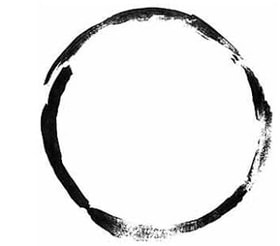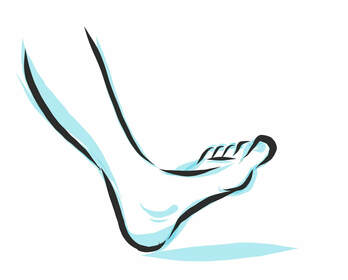|
I have noticed that beginner tai chi students are often restless to learn the next part of the form. Sometimes even, before they have thoroughly memorised the portion that has been shown to them. If you are one of these people, I hope this article brings you some peace. I also hope that it will give your teacher a break as you learn to slow down a little :)
No matter what Tai Chi form you practice, our single and constant reference point is Wu Chi. Wu Chi is the primal singularity, the state that existed before the Big Bang. From it comes everything that is known and all that is not yet known. Wu Chi itself is perfect stillness, perfect silence, complete absence - no-thing; and yet the most potent state there is, pregnant with all possibility. Nothing can be added to it, and nothing can be taken away from it. The story of creation, according to Taoist thought, is this: In the beginning was Wu Chi, the void. Into Wu Chi came something, call it a spark, an intention, consciousness, God if you like? From the one, came two - Yin and Yang. Yin and Yang began their eternal dance thus creating 'the ten thousand things" - all that exists in the universe. We call this dance of Yin and Yang, "Tai Chi." One translation of Tai Chi is, "Movement with intention" When we practice our form, we start in Wu Chi and move to Tai Chi, carrying Wu Chi with us in every action. Moving with stillness at our core, with no agenda we can respond with natural fluidity to whatever we encounter. Standing at the beginning of the form, before I even have the idea to move, I must contact The Stillness. Now, in the silence of the void, I allow an intention to form. My intention coalesces into energy. The energy has a direction and a force, it fills my body with potential power. Holding fast to the centre I allow the force to build. Then, when the moment is right, I let go and my limbs move, without effort, following exactly the path mapped out by my intention. And with this, I shift my weight, ready now to take the first step. All this before the first step! Each thought, each breath, each tiny gesture a fractal containing all of creation. There really is no need to hurry if you think of your practice in this way. A journey of a thousand miles starts under one’s feet - Tao The Ching - ch 64
2 Comments
Tai chi stepping is different from every-day-stepping. For most people, every-day-stepping is actually falling. If you watch people walking down the street, as I often do, you will notice that their body’s forward momentum has already committed its centre of mass to the landing foot before it touches the ground. If the swinging leg suddenly fell off, unlikely I know, there is nothing to halt their forward trajectory. Nothing to prevent these people from falling flat on their faces. This very committed way of moving forward assumes that the ground on to which the falling foot is to land will be there to support the body’s weight. I guess in our modern, paved, carpeted, tiled, flat world, this is a reasonable assumption.
In tai chi, however, the golden rule of “single weightedness” does not allow us to assume this. For one thing, in martial arts terms, stepping with the weight already committed gives your opponent a perfect opportunity to foot sweep you. This single piece of knowledge served me very well during my judo career, compensating somewhat for my lack of skill in other areas. I found that the majority of my opponents adopted the traditional defensive posture known as jigotai. Jigotai is a solid, double weighted stance which is very stable… until you want to move that is. To my surprise, even high-grade judoka would make the mistake of double weighted stepping when moving into attack. This, when I was quick enough, gifted me the chance to sweep the moving leg taking the whole body with it, usually for a winning ippon. The flip side of this was that when my opponent tried to sweep my landing leg, they encountered only emptiness. My weight still being firmly balanced over the standing leg. Meeting emptiness where they expected something solid usually threw them off balance. Leaving them vulnerable to an easy counter attack. Coming off the mat, my opponents would often tell me that, I moved strangely, or that I didn’t “feel” right. I always took these comments as a compliment! Being single weighted doesn’t just mean having your weight mostly on one foot though. It also means adopting a special kind of body awareness which allows you to wide-scan your present moment experience. This unique, single-weighted awareness is a kind of preverbal knowing. An all-encompassing, non-focussed awareness that seems to allow you to monitor multiple aspects of, ‘what is happening now?’ All at once. Questions such as:
Our present-moment awareness must also acknowledge the space through which we move . What is happening in this space and how do I relate to it? How does my energy field - or kinesphere if you prefer a more scientific term - harmonise with this space?
Think about making this simple change to how you move. Soon you will notice that no matter where you go, you will always know where you stand. |
Categories
All
MeJust keeping it real. Doing my best to demystify without killing the magic Archives |
We are a group of Isle of Wight therapists who use our unique skills and collective experience to help
our clients' out of pain, to rediscover their natural vitality, then move towards lasting health, because Wellbeings Feelbetter
our clients' out of pain, to rediscover their natural vitality, then move towards lasting health, because Wellbeings Feelbetter
Call Keith on: 07799 333 804 • Call Angie on: 07399 451 644 • Email: keith@wellbeings-feelbetter.com
Find us at these locations
Castle St Clinic Guilford, Light Centre Clapham, Surrey Holistic,
Landguard Manor, Shanklin. Isle of Wight, The Old Parsonage - Crondall, Farnham
Castle St Clinic Guilford, Light Centre Clapham, Surrey Holistic,
Landguard Manor, Shanklin. Isle of Wight, The Old Parsonage - Crondall, Farnham
Useful links
Reset Rolfing • Ix Chel Maya Massage • RolfingUK • European Rolfing Association • TaiChi Union GB
Copyright 2019
Reset Rolfing • Ix Chel Maya Massage • RolfingUK • European Rolfing Association • TaiChi Union GB
Copyright 2019
Proudly powered by Weebly


 RSS Feed
RSS Feed